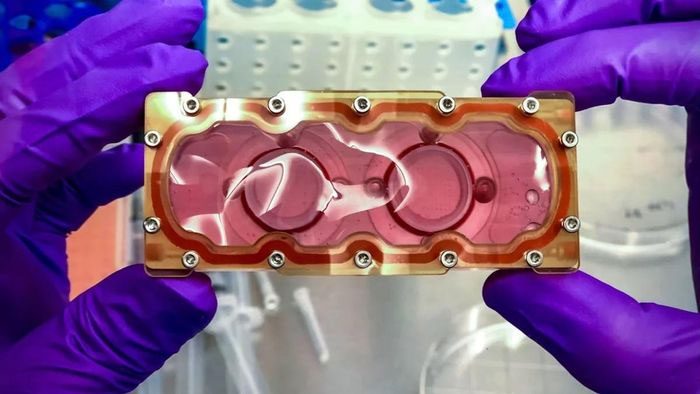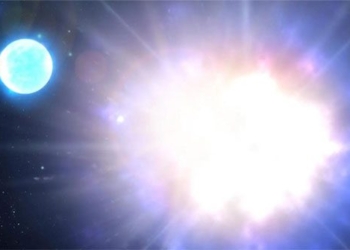The Dragon cargo ship from SpaceX is set to launch on the evening of March 15 (Vietnam time), carrying nearly 2,860 kg of supplies to the International Space Station (ISS). Along with fresh fruit for the crew, it will also transport some small devices containing something a bit unusual: a beating human heart tissue, also known as “heart-on-a-chip.”
This tissue will be used in two experiments – Cardinal Heart 2.0 and Engineered Heart Tissues-2 – to test whether existing medications can help prevent or reverse the negative impacts of spaceflight on the heart.

Human heart tissue models will be sent to the International Space Station.
The beating heart tissue is developed from induced pluripotent stem cells (iPSCs). These cells are part of the investigation into the effects of microgravity on drug response using heart organoids (Cardinal Heart 2.0).
Research indicates that space travel may cause the heart to shrink, as in a microgravity environment, the heart does not have to work as hard to pump blood through the upper parts of the body. Additionally, the heart may change shape under the influence of microgravity, as blood shifts from the legs and abdomen to the head and torso, causing the heart to swell, according to NASA.
Studies have shown that the heart also undergoes cellular changes associated with aging during spaceflight. Therefore, this research is not only vital for future space exploration but could also lead to improved treatments for heart disease and age-related cardiac dysfunction on Earth, said Devin Mair, a PhD candidate at Johns Hopkins University involved in the heart tissue design, during a NASA press conference on March 14.
The experiments are part of the Tissue Chips in Space initiative, a joint project of the U.S. National Institutes of Health and the International Space Station National Laboratory aimed at understanding the effects of spaceflight and microgravity on the human body, according to NASA.
The heart tissues are designed for two experiments involving two devices carrying heart muscle cells – contracting cardiac muscle cells – in small chambers filled with liquid.
The heart muscle cells are developed from stem cells and shaped into a 3D form in the lab. They are then strung together between two posts in each chamber. One post contains a magnet that moves every time the muscle cells contract. A sensor tracks the movement of the magnet, allowing researchers to monitor muscle contractions in real time.
Mair and his colleagues previously sent heart tissue into space in March 2020, and in that experiment, they observed signs indicating that the mitochondria of the cells were malfunctioning, he noted during the NASA press conference.
Mitochondria provide energy for cells and thus fuel the heart’s blood-pumping process; their dysfunction is associated with numerous heart issues, including arrhythmias and heart failure.
Mair stated: “In an experiment conducted during this trip to the ISS, the team will continue to study mitochondrial dysfunction, as well as test various existing medications to see if they can prevent or reverse these issues. These medications specifically target mitochondrial dysfunction and the upstream mechanisms leading to this dysfunction.”
Similarly, the Cardinal Heart 2.0 experiment will use small, 3D heart tissue blocks, known as heart organoids, to test whether approved medications can protect heart cells from the effects of microgravity.
The organoids will be prepared before the Dragon spacecraft launches, aiming to mitigate the negative impacts of microgravity exposure, said Dilip Thomas, a postdoctoral researcher at Stanford Cardiovascular Institute involved with Cardinal Heart 2.0, during the press conference. These medications include statins and antihypertensive drugs used for heart failure.





















































